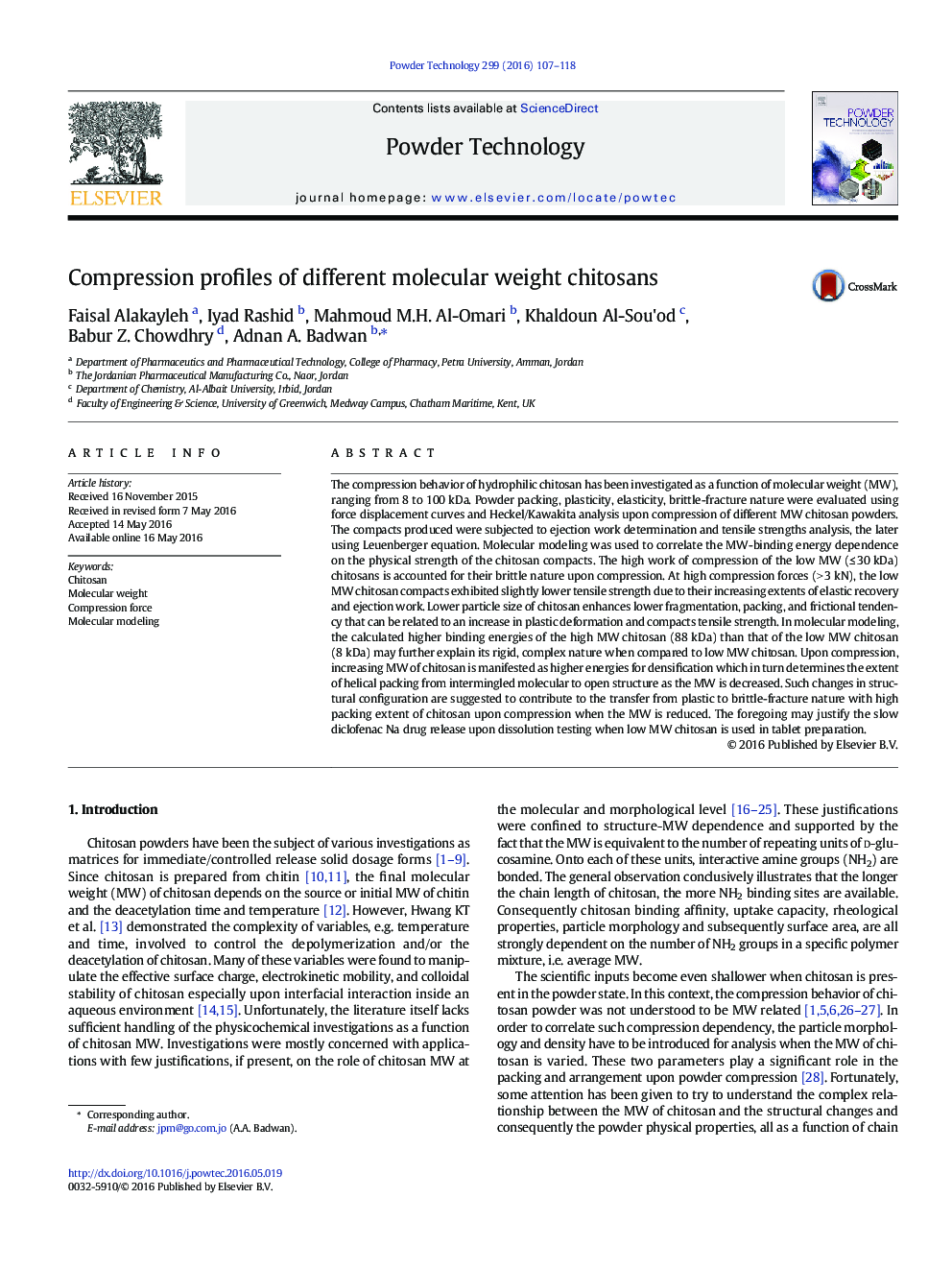| کد مقاله | کد نشریه | سال انتشار | مقاله انگلیسی | نسخه تمام متن |
|---|---|---|---|---|
| 234926 | 465620 | 2016 | 12 صفحه PDF | دانلود رایگان |
• Tensile strength of chitosan compacts is associated with chitosan molecular weight.
• Low chitosan compacts tensile strength is attributed to high elastic recovery.
• High MW chitosan has a more stable structure than the low MW chitosan.
• High MW chitosan provides immediate release properties in solid form preparations.
• Low MW chitosan provides sustained release properties
The compression behavior of hydrophilic chitosan has been investigated as a function of molecular weight (MW), ranging from 8 to 100 kDa. Powder packing, plasticity, elasticity, brittle-fracture nature were evaluated using force displacement curves and Heckel/Kawakita analysis upon compression of different MW chitosan powders. The compacts produced were subjected to ejection work determination and tensile strengths analysis, the later using Leuenberger equation. Molecular modeling was used to correlate the MW-binding energy dependence on the physical strength of the chitosan compacts. The high work of compression of the low MW (≤ 30 kDa) chitosans is accounted for their brittle nature upon compression. At high compression forces (> 3 kN), the low MW chitosan compacts exhibited slightly lower tensile strength due to their increasing extents of elastic recovery and ejection work. Lower particle size of chitosan enhances lower fragmentation, packing, and frictional tendency that can be related to an increase in plastic deformation and compacts tensile strength. In molecular modeling, the calculated higher binding energies of the high MW chitosan (88 kDa) than that of the low MW chitosan (8 kDa) may further explain its rigid, complex nature when compared to low MW chitosan. Upon compression, increasing MW of chitosan is manifested as higher energies for densification which in turn determines the extent of helical packing from intermingled molecular to open structure as the MW is decreased. Such changes in structural configuration are suggested to contribute to the transfer from plastic to brittle-fracture nature with high packing extent of chitosan upon compression when the MW is reduced. The foregoing may justify the slow diclofenac Na drug release upon dissolution testing when low MW chitosan is used in tablet preparation.
Chemical structure of d-glucosamine (A), high MW (B) and low MW (C) chitosans.Figure optionsDownload as PowerPoint slide
Journal: Powder Technology - Volume 299, October 2016, Pages 107–118
